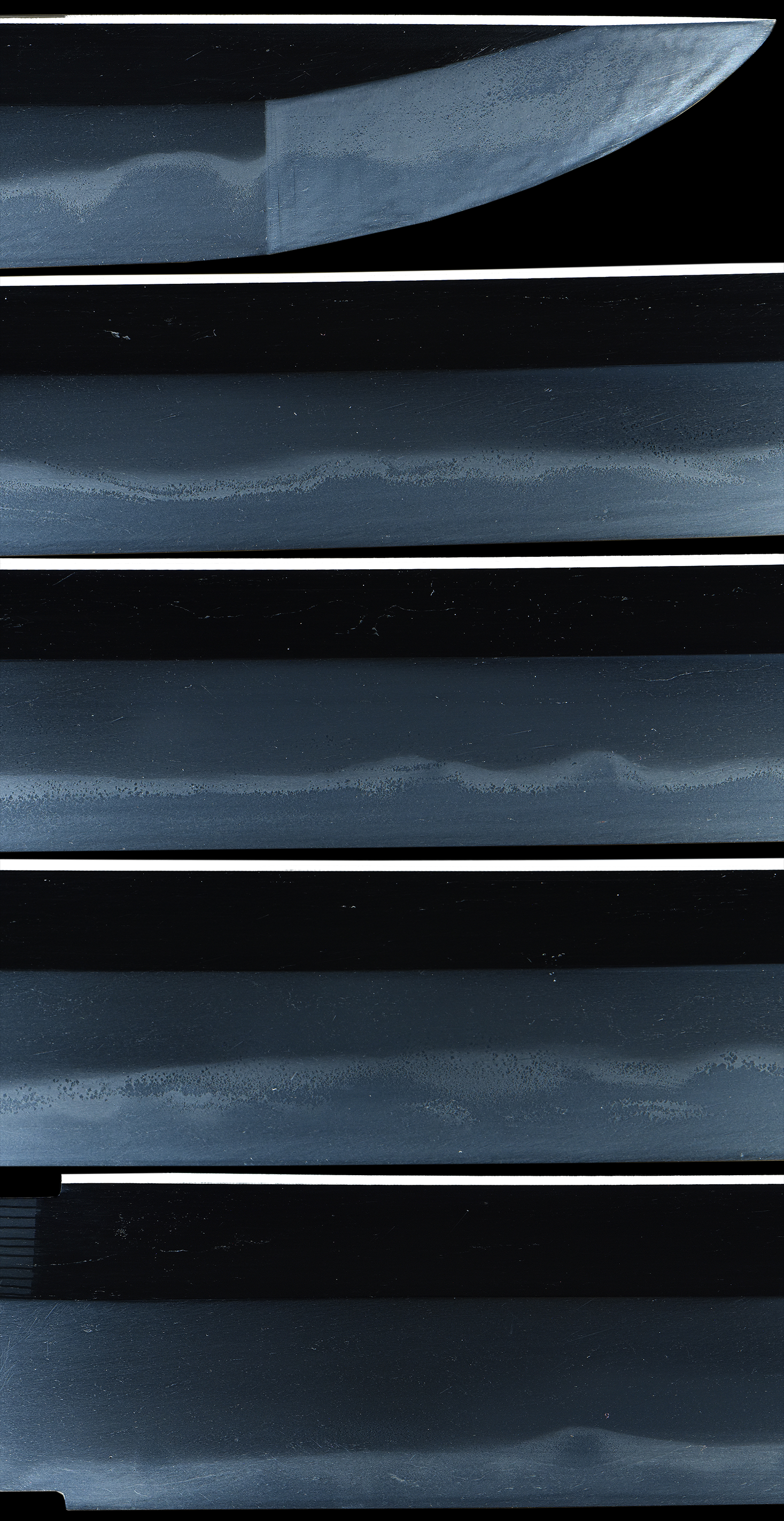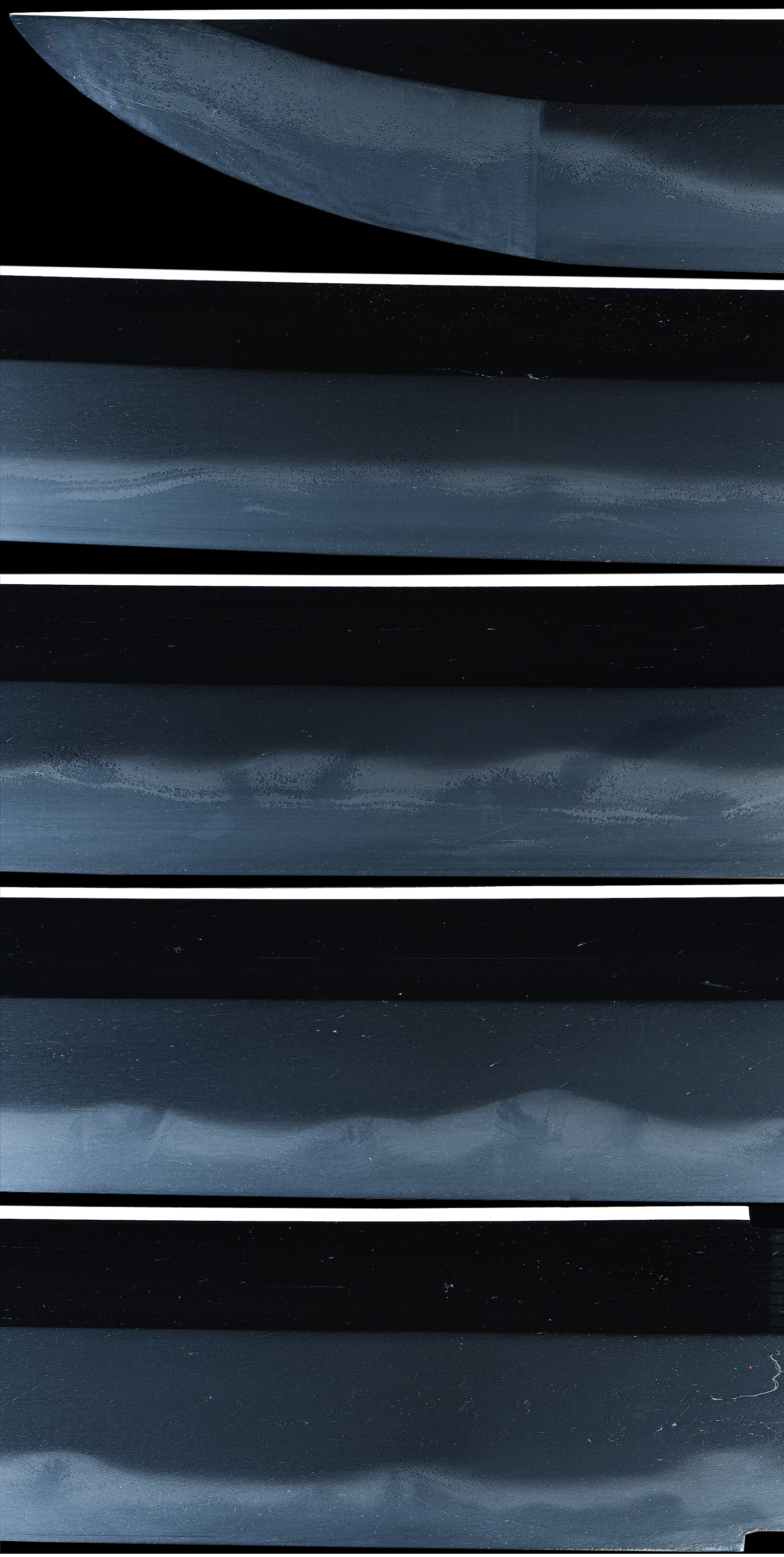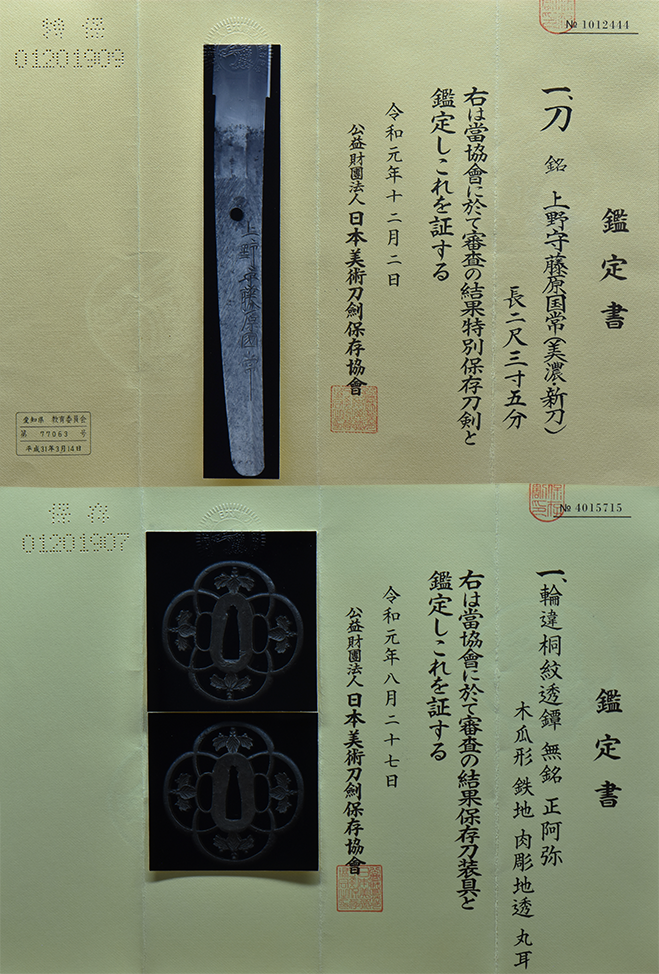Kozuke no Kami Fujiwara Kunitsune
1st. Gen.
Ko zuke no Kami Fujiwara Kunitsune’s real name is Nara Taro. He is son of Kanetsune. He worked actively in Mino province. We have here a beautiful katana by the wazamono swordsmith Kozuke no Kami Kunitsune who worked during the Manji era circa 1658-1661. There is a wonderful sori present which shows a splendid curvature. It has a bright and consistent gunome midare hamon with classic Mino tradition togari peaks traversing the length of the blade. This is a well-forged sword with particularly beautiful masame hada in the shinogi-ji. The gunome-midare is peppered in many varieties of nie. The blade is also smothered in ji-nie. There is nijuba and sweeps of tsunagashi feathering the hamon. A wonderful blade to look at. There is nie-kuzure and a longish kissaki. You can find small wisps of yubashiri. The hada is a combination of itame nagare with mokume and masame in the shinogi-ji. The blade has been awarded Tokubetsu Hozon by the NBTHK attesting to the quality of the said smith and well deserved. It is in a good original polish. The blade is in shirasaya and the koshirae has a tsunagi within.
The koshirae is very imposing. The saya is in a black lacquered finish. The fittings are in suite and of the imperial family mon. The tsuba is of an irregular shape in iron with a motif of the imperial family. It is a form of the Pauliwina. The tsuka ito is a rich blue color over a white same (rayskin). The sageo is a blue to match the ito. The seppa are washed in gold and the habaki is a striated copper, the tsuba also has NBTHK Hozon papers. The mon of the Toyotomi Clan, now used as the emblem of the Japanese Government; originally an emblem of the imperial family—a stylized paulownia.
Mon (紋), also called monshō (紋章), mondokoro (紋所), and kamon (家紋), are Japanese emblems used to decorate and identify an individual, a family, or (more recently) an institution or business entity. While mon is an encompassing term that may refer to any such device, kamon and mondokoro refer specifically to emblems that are used to identify a family. An authoritative mon reference compiles Japan’s 241 general categories of mon based on structural resemblance (a single mon may belong to multiple categories), with 5,116 distinct individual mon. However, it is well acknowledged that there are a number of lost or obscure mon. Among mon, the mon officially used by the family is called jōmon (定紋). Over time, new mon have been created, such as kaemon (替紋), which is unofficially created by an individual, and onnamon (女紋), which is created by a woman after marriage by modifying part of her original family’s mon.
- Mei: Kozuke No Kami Fujiwara Kunitsune
- Date: Manji-Kanbun (1658-1673)
- Nagasa: 28-1/8 inches
- Sori: 19.0 mm
- Width at the ha-machi: 29.4 mm
- Width at the yokote: 21.7 mm
- Thickness at the mune-machi: 7.0 mm
- Construction: Shinogi zukuri
- Mune: Iori
- Nakago: Ubu
- Kitae: Itame/mokume
- Hamon: Gunome/Midare
- Boshi: Maru
- Condition: Good polish
(shipping and insurance included)
Email us if your interested in this item and remember to include the order number for this item: fss-921.
Click to Enlarge Image
Click to Enlarge Image
This sword has a Tokubetsu Hozon certificate issued by NBTHK. This high level authentication paper is only given to Japanese swords, worth preserving and of higher quality by Nihon Bijutsu Touken Hozon Kyokai (the Japanese Sword museum for the Preservation of the Japan Art Sword).
For Sale


























